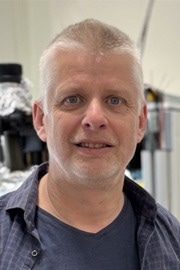In this interview, AZoQuantum speaks with Dr. Takahiro Hashimoto, Product Manager, and Dr. Anders Hahlin, Senior Scientist, from Scienta Omicron about exploring electronic band structure and collective excitations in quantum materials using ARPES and HREELS.
Can you please introduce yourselves and your roles at Scienta Omicron?
Dr. Anders Hahlin: I'm a senior scientist at Scienta Omicron. I joined the company in 2005 as a test and installation engineer and have worked with electron spectroscopy systems globally. My focus has been developing technologies like the DA30 and DFS30 analyzers, and currently, I work on instrumentation for our electron spectroscopy solutions.
Dr. Takahiro Hashimoto: I'm a product manager at Scienta Omicron, where I support researchers using our electron spectroscopy systems. I joined the company in 2020 after earning my Ph.D. from the University of Tokyo, where I worked on ultra-high resolution laser ARPES. My role is to bridge research needs with practical development to support the surface science community.

Image Credit: CI Photos/Shutterstock.com
Why is it important to study quantum materials today?
Dr. Hahlin: Quantum materials are foundational to many emerging technologies like AI, quantum computing, and EVs. For example, understanding superconductivity and spintronics can lead to more efficient electronics, while studying phonons is crucial for improving heat transport in solid-state batteries. These applications demand deep insights into the electronic band structure and collective excitations of materials.
Could you explain how photoemission spectroscopy and HREELS work and what makes them complementary?
Dr. Hahlin: Photoemission spectroscopy, such as XPS and Angle-resolved photoemission spectroscopy (ARPES), uses photon-in/electron-out processes to study electronic band structures and chemical composition. High-Resolution Electron Energy Loss Spectroscopy (HREELS), on the other hand, uses electron-in/electron-out processes to examine surface excitations like phonons, magnons, and plasmons. Both techniques rely on the same electron analyzer and share instrumentation, making them ideal for multimodal characterization of quantum materials.
What are the key technological developments that have advanced ARPES instrumentation?
Dr. Hahlin: The evolution from point-mode detection to deflection-mode analyzers has been pivotal. Starting with the SCS 200 analyzer in the 90s, we progressed to the DA30 system, which maps a full 3D image of band structure without mechanical movement. Recent innovations include 3D electronic focus adjustment for precise and efficient alignment, which is critical for micro/nano ARPES.
How does HREELS benefit from multi-channel detection, and what does it bring to surface science?
Dr. Hashimoto: Traditional HREELS required long acquisition times due to single-channel detection. With multi-channel systems like the MCES150 combined with our analyzers, we now obtain full energy and momentum spectra in minutes rather than months. This makes it feasible to study complex phonon and magnon dispersions with high energy and angular resolution in a much more efficient way.
Can you give an example of a research application using combined ARPES and HREELS?
Dr. Hashimoto: One powerful example is studying electron-phonon coupling in graphene. ARPES reveals kinks in electronic band dispersion due to electron-phonon interactions, while HREELS shows phonon anomalies at corresponding to the size of Fermi surface. Measuring both on the same sample provides direct correlation, enhancing our understanding of such interactions in topological and superconducting materials.
What kind of samples and conditions are needed for successful ARPES and HREELS measurements?
Dr. Hahlin: Clean, well-prepared surfaces are essential for reliable data. This can be achieved by cleaving samples in UHV or preparing epitaxial films. Cooling the sample often enhances resolution, particularly in ARPES measurements. In contrast, HREELS typically performs well at room temperature, though some studies may still benefit from lower-temperature conditions.
How does Scienta Omicron’s instrumentation support multimodal characterization?
Dr. Hashimoto: Our systems integrate photon and electron sources, a shared electron analyzer, and optional X-ray sources. This allows seamless switching between ARPES, XPS, and HREELS, enabling comprehensive characterization of both fermionic and bosonic excitations on the same sample under the same conditions. It's a powerful approach for tackling complex questions in quantum material science.
About the Speakers
Dr. Takahiro Hashimoto
Dr. Takahiro Hashimoto is a product manager at Scienta Omicron, where he supports and guides the development of electron spectroscopy solutions tailored to the needs of surface science researchers. He earned his Ph.D. in Science from the University of Tokyo, focusing on ultra-high-resolution laser angle-resolved photoemission spectroscopy (ARPES).
Before joining Scienta Omicron in 2020, he conducted research in electronic structure characterization using ARPES techniques. At Scienta Omicron, Dr. Hashimoto has contributed to developing high-performance spectroscopy instrumentation and holds a patent on electron detectors. He continues to play a vital role in advancing multimodal surface analysis tools, particularly the integration of HREELS with ARPES for comprehensive studies of quantum materials.
Dr. Anders Hahlin
Dr. Anders Hahlin is a senior scientist at Scienta Omicron, where he has contributed to the advancement of electron spectroscopy technologies for over two decades. He earned his Ph.D. in Physics from Uppsala University, focusing on the magnetism of transition-metal thin films.
Since joining Scienta Omicron in 2005, Dr. Hahlin has held several key roles, including test and installation engineer, service manager, and development engineer. He has been instrumental in developing high-performance ARPES systems such as the DA30 and DFS30 analyzers, integrating innovations like electronic 3D focus adjustment for enhanced precision. With extensive experience in global instrumentation deployment and ultra-high vacuum system design, Dr. Hahlin continues to lead developments that support cutting-edge quantum materials research.

This information has been sourced, reviewed and adapted from materials provided by Scienta Omicron .
For more information on this source, please visit Scienta Omicron .
Disclaimer: The views expressed here are those of the interviewee and do not necessarily represent the views of AZoM.com Limited (T/A) AZoNetwork, the owner and operator of this website. This disclaimer forms part of the Terms and Conditions of use of this website.